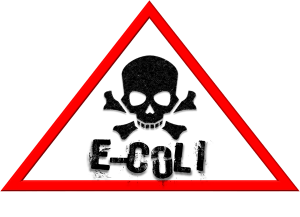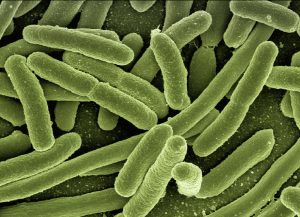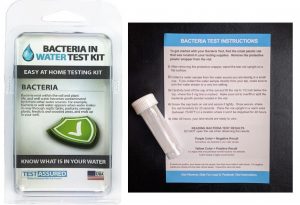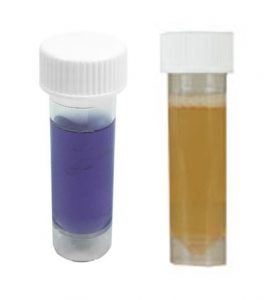

Bacteria in Drinking Water
Bacterial contamination in drinking water has been an issue in the United States for many years. From 1920 through 1960, there was an epidemic of typhoid fever that was spread by contaminated water. Typhoid is caused by Salmonella typhi bacteria that grows in the intestines. In unsanitary conditions, water becomes contaminated when it comes in contact with the feces of an infected person. Officials were able to get control of those particular bacteria, but this only made room for others to take their place.
Types of Bacteria Found in Water
There are thousands of different species of bacteria that can live in our water. Certain bacteria can help to purify the water and keep it safe. Some bacteria are harmful to humans and can cause serious health issues. Other bacteria are relatively harmless, but they do act as indicators of contamination.
Coliform bacteria are present in the feces of animals and humans. Although these bacteria are not likely to cause illness, their presence in drinking water is an indication that the water is contaminated with feces or sewage. If water tests positive for coliform bacteria, it is likely that there are additional, more dangerous bacteria present that could cause serious illness.
Escherichia coli, also known as E. coli, is a species of coliform bacteria that is particularly concerning. This is the same bacteria that causes food poisoning, and whether you ingest it in your food or your water, it can cause serious illness. When E. coli is found in that water, it is a definitive indication of fecal contamination.
Contaminated Municipal Water
If you receive your water from a public water system, it is tested and treated for bacteria on a regular basis. When testing indicates coliform bacteria in the water, the public works department must identify the source and correct the problem. Depending on the severity of the problem, the water company may send a notification or health advisory to its customers. The water system must be disinfected and flushed before they will advise that the water is safe for consumption.
Bacteria in Well Water
Because coliform bacteria are found in the soil, surface water, and on plants, they pose a threat to well water. When it rains, these bacteria seep through the soil where they can enter groundwater systems. Poorly constructed, cracked, or unsealed wells can easily become contaminated by coliform bacteria.
Health Risks of Coliform in Water
If your water is contaminated with harmful bacteria, one of the first indications of this will be the presence of coliform in the water. The existence coliform bacteria means there could also be harmful viruses, protozoa, and parasites contaminating the water. All of these pollutants can cause illness and potentially serious health issues.
E. coli and other bacteria cause vomiting, diarrhea, stomach cramps, and fever. They have also been known to cause pneumonia, urinary tract infections, and respiratory illnesses. Protozoa can cause dysentery, while certain viruses can lead to hepatitis.
How to Test for Bacteria in Your Water
Whether you have city water or well water, it is important to test your water at least once a year for bacteria. Well water is not regulated, and it is up to the well owner to test the water quality. Municipal water is regulated, but each state has different testing requirements and regulations. Testing your water yourself is the best way to make sure it is not contaminated.
There are many options available to ensure that your water is free from harmful bacteria. You can have an outside laboratory analyze your water for a number of contaminants. With this option, you will need to take a sample of your water and send it to the lab of your choice. A plastic bottle is a convenient way to transport the water to the lab, but make sure that you do not wash the bottle before you fill it. Residue from the soap could remain in the bottle and could jeopardize the accuracy of the test.
Another option is a do-it-yourself water testing kit which is more cost-effective and often gets you quicker results. TestAssured offers an easy-to-use Bacteria in Water Test that will give you results within 48 hours.
 To perform the bacteria test:
To perform the bacteria test:
- Remove the protective wrapper from the sample vial and stand it upright on a flat surface.
- Collect a water sample in a small cup from the source you wish to test. If you are collecting the sample directly from your tap, make sure to adjust the water stream to a very low setting. The sample you test should not come from a filter or a water softener.
- Twist off the cap from the sample vial, being careful not to spill the bacterial growth powder it contains. Fill the vial to the 5ml line, about a ½ inch below the top. Do not overfill the vial or you will lose some of the bacterial growth powder, and your results will not be accurate.
- Screw the cap back on the vial and secure it tightly. Shake the vial vigorously for 20 seconds. Place the vial upright in a warm area (between 70-90°F) and do not disturb for 48 hours.
- After 48 hours, the color of the liquid indicates the results. DO NOT open the vial when observing results. If the liquid is purple, no bacteria were If the liquid has turned yellow, it is highly likely that your water contains harmful bacteria. Further testing is recommended.

What Are Safe Bacteria Levels in Drinking Water?
The Environmental Protection Agency regulates drinking water for bacterial contamination. Their guidelines do not allow any contamination by total coliforms in drinking water. Even though these bacteria are not harmful to humans, their presence can mean that there are other unhealthy bacteria in the water source.
EPA Requirements for Bacterial Testing
Type of Bacteria EPA Requirements
Presence of Coliforms When there is more than one positive test for coliforms in one month, water suppliers must notify the state as soon as practical and notify customers within 30 days.
Presence of E. coli When a routine sample tests positive for E. coli, water suppliers must notify the state and their customers as soon as practical but no later than 24 hours.
What’s Hiding in Your Water?
Testing for coliform bacteria is a simple way to make sure your water isn’t making your family ill. If you have well water, it is recommended that you test your water once a year in the spring or early summer since coliform is most likely to appear during wet weather. Even if you have municipal water, testing for bacteria can help prevent the contraction of water-borne illness.
If your water tests positive, boiling the water is advised until the contamination has been eliminated. In the case of contaminated well water, repairs or modifications may be required to prevent further contamination.
Find out what might be hiding in your water supply with TestAssured’s bacteria test kit.
